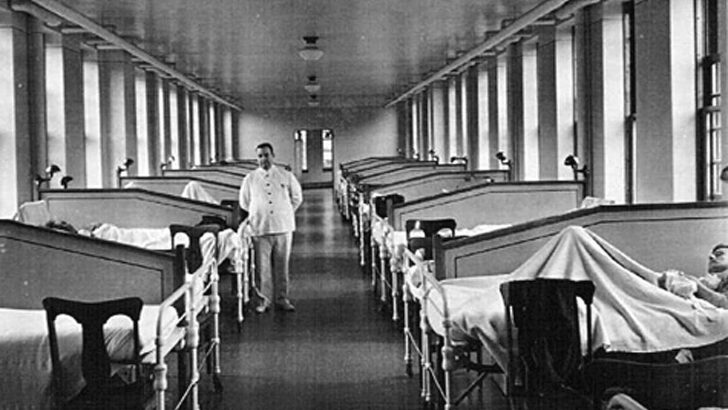Historic memories of the Spanish flu of 1918-20 have been frequently invoked during the present pandemic – the novelist Emma O’Donoghue, who wrote Room, will be publishing a new novel in July based on the so-called Spanish flu. (Unfair to blame the Spanish for that pandemic: Spain’s press simply reported it, being free of wartime censorship, whereas the newspapers in other countries had reporting restrictions.)
But there’s a contagious disease which caused social isolation much nearer to our time, and which was also greatly feared: tuberculosis.
Effective penicillin treatment for TB started to be introduced by the late 1940s, but TB cases which were incurable still existed right into the 1950s. In Dublin 4, where I grew up, there was a family man of considerable means who was obliged to be isolated in his large mansion house, because he was afflicted with TB.
Smile
I used to play with his children in the grounds of that house, and their father, Timothy, would appear at an upper window to smile and wave. He was a gentle kind of person and a good-looking man – my mother thought he resembled the film actor Tyrone Power, with dark eyes and a rich supply of hair.
But when my elder brother paid a visit to Timothy because he was sorry for the poor fellow’s isolation, sharing, ‘a couple of bottles of stout’, my Ma was furious. My brother, earlier on, had had a brush with TB himself, but successfully recovered. Mother was terrified he would contract a second dose.
Christian charity was extolled, but it was still thought sensible to avoid the contagion – and TB was notoriously contagious.
There was another case, too, in our neighbourhood, that I only learned about later – a young boy of about 10 years of age living in Newbridge Avenue, Sandymount. He had to be isolated in a garden shed at the back of his home and his meals brought out to him, while he stayed alone.
That young boy died, as did Tim Lloyd. Despite his wealth, his tuberculosis couldn’t be cured.
Sanatoria
The family moved out of that house, which had a magical, castellated aspect, with extensive grounds. It became the Marist College, Ballsbridge.
TB patients were usually sent to sanatoria, but some were evidently isolated at home. How lonely they must have been – and in the days before electronic media or easy access to phones. Even in sanatoria, TB patients felt the stigma of their contagion.
In this pandemic, I now think back to what TB patients must have suffered, not just from the disease, but from the isolation it imposed.
****
April 30 is the feast-day of St Faolchú of Iona, a successor to Colum Cille. He became abbot of Iona at the age of 74, in the year 716, according Pádraig Ó Riain’s Dictionary of Irish Saints. Let us not forget that, according to Lord Clark in his famous BBC series Civilisation, the Irish monks who settled on the island of Iona were among those who kept Christianity alive when it was being extinguished by the barbarians all over Europe.
April 30 is also the feast-day of St Ciarán of Seirkieran at Ballybott, Co. Offaly, the site of a former Augustinian monastery. He was a bishop and a prophet, as he foresaw the arrival of the Vikings in Ireland.
****
Each Sunday now, I visit a different church with online streaming and it’s interesting to see Masses in different settings and with different approaches. All of them have been rewarding in their different ways: the austerity of Mass from Glenstal Abbey has a prayerful beauty, while the Newman Church in Stephens Green and Haddington Road in Dublin have an aesthetic spirituality.
Last Sunday I joined the Dominican church in Claddagh, Galway which is a little gem. The priest was a very sweet older man who brought a rucksack onto a table by the altar to illustrate provisions for a journey, like the disciples walking to Emmaus. It was a charmingly informal, west of Ireland touch.
Several Sunday Masses have female cantors, who have been excellent.
I wonder if this experience of people tuning into different Masses online will impact on styles of worship. Comparisons often bring accretions or subtle changes to any ritual.


 Mary Kenny
Mary Kenny
